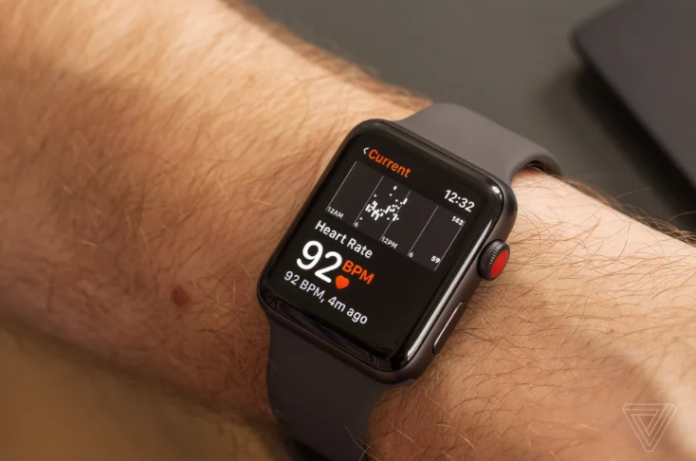People who get irregular pulse notifications on an Apple Watch but don’t have atrial fibrillation — the condition the feature focuses on detecting — could still have another type of problem with their heartbeat, according to a new study.
The findings show that even if someone with a concerning alert from their Apple Watch doesn’t get an atrial fibrillation diagnosis, they may not be in the clear, says study author Marco Perez, the director of the Inherited Arrhythmia Clinic at Stanford University Medical Center. “Even if you didn’t find atrial fibrillation, we were finding a lot of people who had something else that probably needed some clinical attention,” he says.
The analysis, published in the journal Circulation, was done using data from the Apple Heart Study, which was designed to test the Apple Watch’s ability to detect irregular heart rhythms. It launched in 2017 and included over 400,000 participants. In the study, anyone who got an irregular pulse notification from the watch was sent a clinical ECG patch, which could monitor their heart rhythm over a longer period of time. About 2,000 participants got an irregular pulse notification, and an earlier analysis showed that around a third of those people who then wore an ECG patch had atrial fibrillation show up during that monitoring period.
This new study looked at the ECG patch data from the remaining participants that didn’t have atrial fibrillation detected. “If we didn’t find atrial fibrillation — what did we find?” Perez says. Around 40 percent of those people had some other type of irregular pulse, including premature atrial contractions (extra heartbeats coming from the top of the heart) and premature ventricular contractions (extra heartbeats from the bottom of the heart). “They had a lot of these extra heartbeats,” he says. “Those are things that we pay attention to.”
Cardiologists still don’t have a good grasp on how dangerous those types of frequent extra heartbeats can be, and often don’t agree on how or if they should be treated, Perez says. They’ve been linked to the development of atrial fibrillation and heart failure, but there isn’t a clear understanding of the best way to manage them.
The study also showed that almost a third of study participants who did not have atrial fibrillation detected on the ECG patch said that they eventually went on to get the condition diagnosed outside of the study. So even if someone doesn’t get a diagnosis on an initial evaluation, it may make sense to keep an eye on them going forward. “We probably have to start thinking about the best strategy for following those patients over time,” Perez says.
Right now, there’s a wide range of responses to these types of alerts. If someone tells a cardiologist that they had an irregular pulse notification, the doctor might do a quick, 10-second check on an ECG in the office. Other doctors might send them home with a patch for a week. Still others, if there are other factors that make them suspicious, might want to do longer-term monitoring. The technology is still new and the approach is still evolving, Perez says.
Additional research will help refine the approach. But for now, this study implies that people who get irregular pulse warnings should keep an eye on their heart health, Perez says. “There might very well be something that is going on that could cause you to have an irregular pulse, and could be a sign of something wrong with your heart.”














